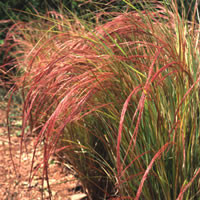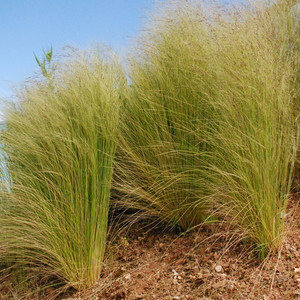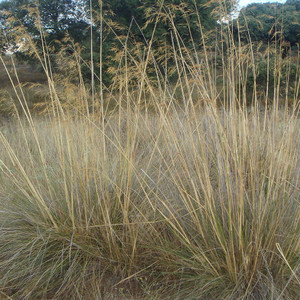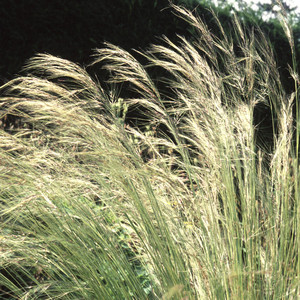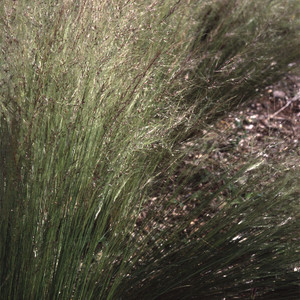-
Nothing here. Please add something or load your cart
-
STIPA ARUNDINACEA
Arching sprays of purple feathery plumes consist of golden brown fine leaves forming into compact clumps. This absolute beauty is one of the most impressive of all hardy grasses, soundly perennial and long-lived!! ... Learn More$3.51
(200+ seeds)
-
STIPA ELEGANTISSIMA
'Elegant' describes this delicate grass perfectly. The compact sheaf consists of countless thin stems surmounted by clouds of nebulous golden smoke which whispers and hisses gently as it waves in the wind, much resembling a loftier Stipa tenuissima. An impressive plant, absolutely unbeatable growing on its own, and yet to be discovered by the nursery trade! ... Learn More$3.92
(50+ seeds)
-
STIPA EXTREMEORIENTALIS
Stipa extremeorientalis, commonly known as Eastern Feather Grass, is an elegant and ornamental grass species that adds a touch of grace to any landscape. Belonging to the Poaceae family, this grass is celebrated for its fine texture and distinctive flowering plumes. Eastern Feather Grass is characterized by its tufted, fountain-like form. The slender, arching leaves create a delicate yet dense foliage that sways gracefully with the wind, imparting a sense of movement to the landscape. The fine texture of the grass is a defining feature that adds a subtle and sophisticated touch. One of the mos ... Learn More$3.44
(40 seeds)
-
STIPA GIGANTEA
The largest of all feather grasses, and certainly one of the most elegant and stately of all ornamental grasses, forming relatively insignificant basal clumps of narrow leaves. From these arise long, strong stems holding huge, loose panicles of golden spikelets with dangling awns which persist well into winter. ... Learn More$4.32
(6 seeds)
-
STIPA LESSINGIANA
This rare, superior and truly spectacular plant is related to but larger and finer than Stipa tenuisima, but sadly has barely been discovered in the trade. The massed plumes of soft feathery seedheads are ideal to whisk your hand through, the longer they stand the prettier they become. ... Learn More$3.92
(50+ seeds)
-
STIPA TENUIFOLIA
One of the most graceful and delicate of all grasses with delicate, feathery, fog-like plumes which move with the slightest breath of air upon them. A perfect plant for mass plantings in stately homes and parks, and in planting schemes in up-market towns, but equally good as a single specimen. ... Learn More$3.44
(100+ seeds)

